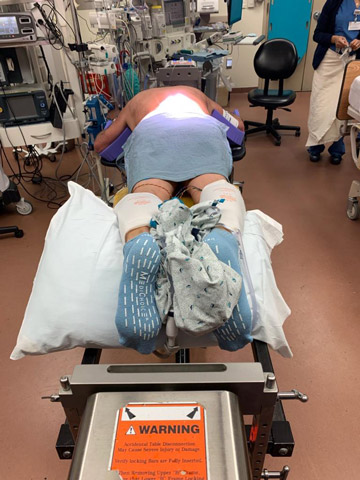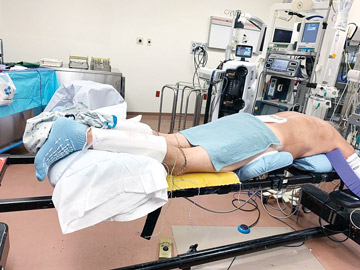Before we changed things up, our positioning method was like an orchestra where each musical section played a different song. The anesthesia team would be adjusting the patient's head while the nursing team fiddled with the hip pads and the
doctor worried about something else entirely. Yes, everybody was doing their part, but they weren't doing it together. Result: A whole lot of unnecessary readjustments and, in too many cases, skin tears.
Then we changed our process so everyone is on the same page at the same time, and now our team is as in synch as the London Symphony Orchestra. The new approach starts at the patient's head and moves down step by step to the feet to ensure
everything is anatomically correct. Anesthesia goes first to make sure everything is in position (Is the vent good? Are the eyes good?) because you can't proceed to the next step if the airway isn't secured. Once anesthesia does
its thing, our RN and RNA will check the head to ensure that it's properly positioned and safe for the patient to remain in for up to several hours. We follow the same anesthesia-nursing 1-2 check for each of the patient's remaining pressure
points — the neck, shoulders, arms, chest, hips and knees and, finally, the feet. Once we get through the initial check and make any glaring adjustments (left arm noticeably different than the right, for example), we start our final
checklist. Again, we do this from the same spot in the very same way with each patient.
From the foot of the bed, everybody (nurses, doctors, anesthesia, techs) will do one last check — this time from feet to head — to make sure the patient is properly positioned. As we move up, our team will look to answer questions
like Are the hips level or is one slightly tilted? Is the spine perfectly straight? Is one shoulder higher than the other? Are the elbows at the same level? Not every variation is the result of poor positioning. Sometimes patients
have certain anatomical abnormalities that make it appear as if they're misaligned. But this final checklist ensures no mistakes are made on our end. When we're satisfied everything is where it should be, the surgeon gives the final approval
on the positioning.
.svg?sfvrsn=be606e78_3)


.svg?sfvrsn=56b2f850_5)